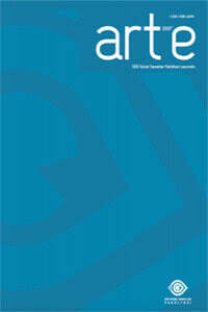p-XRF’in Kültürel Miras Eserleri Üzerine Yapılan Çalışmalarda Kullanımı
Kültürel miras eserlerinde yapılacak bilimsel çalışmalar, incelenen eserin üretim yerini ve orijinal olup olmadığını tespit ederken, üretildiği dönemin teknolojisinin de öğrenilmesini sağlar. Öte yandan, restorasyon ve konservasyon işlemleri için, uygun malzeme ve uygun yöntem seçimine yardımcı olur. Günümüzde bazı tahribatlı yöntemlerin (Raman spektroskopisi, X-ışınları floresans spektroskopisi) tahribatsız modelleri, yerinde analizlere imkan tanıdığından, kazı alanlarında, müzelerde ve özel koleksiyonlarda sanat eserleri üzerine yapılan arkeometrik çalışmaların günden güne artmasını sağlamışlardır. Bu çalışmada, tarafımdan Limoges üretimi tabaklar taşınabilir X-ışınları floresans spektrometresi (p-XRF) ile analiz edilmiş, orijinal ve restore edilen bölgelerdeki sarı renkli dekorun birbirleri arasındaki malzeme farklılığı ortaya konmuştur. Restoratör, orijinal dekordan çok farklı bir bileşimle, orijinaline yakın bir tonda sarı rengi elde edebilmiştir. Ancak, görsel olarak açık ve koyu ton farklılıkları gözlemlenmektedir. Restorasyon öncesi yapılacak malzeme analizleri, restorasyonun estetiksel ve fiziksel olarak kalıcı olmasını sağlarlar.
ARCHAEOMETRIC APPROACH ON THE STUDIES OF CULTURAL HERITAGE OBJECTS
The scientific studies, which are carried out on the cultural heritage items, identify the provenance and authenticity of the studied artifacts as well as shedding some light on the technology of production period. Besides, the studies lead to choosing both the appropriate materials and techniques for the restoration and conservation treatments. Nowadays, non-destructive models of some destructive techniques (Raman spectroscopy, X-rays fluorescence spectroscopy) by on-site measurements, due to it renders to possible, increased studying the number of archaeometric works on the cultural heritage artifacts, in the excavation sites, museums, and private collections. In this study, I analysed two porcelain plates of Limoges production with a portable X-rays fluorescence (p-XRF) instrument revealing the compositional differences between the yellow coloured places are intact and renovated adornments. The restorator was able to obtain a very similar hued yellow colour by a very different composition from the original decor. Notwithstanding, visually, light and dark shade differences are apparent. Material analysis to be performed before renovation ensure the restoration to be aesthetically and physically permanent and sustained
Keywords:
Archaeometry, Portable XRF, Limoges Cultural Heritage,
___
- Ambers, J. ve Freestone, I. C. (2005). “Introduction”, The Raman Spectroscopy in Archaeology and Art History içinde, ed. Howell G. M. Edwards ve John M. Chalmers, Cambridge: The Royal Society of Chemistry Publications, s. 3-15.
- Burton, W. (1906). Porcelain, Its Nature, Art and Manufacture, London: B. T. Batsford.
- Finlay, R. (2010). The Pilgrim Art Cultures of Porcelain in World History, USA: University of California Press.
- Hancock, R. G. V. (2000). “Elemental analysis”, Modern Analytical Methods in Art and Archaeology içinde, ed. Enrico Ciliberto ve Giuseppe Spoto, USA: John Wiley & Sons, Inc, s. 11-19.
- Henderson, J. (2000). The Science and Archaeology of Materials, London and New York: Routledge, Taylor and Francis Group.
- Howell, G. M. ve Chalmers, J. M. (2005). “Practical Raman Spectroscopy and Complementary Techniques”, The Raman Spectroscopy in Archaeology and Art History içinde, ed. Howell G. M. Edwards ve John M. Chalmers, Cambridge: The Royal Society of Chemistry Publications, s. 41-67.
- İşman, F. (1972). Seramik Teknolojisi: Sır, Seramik Boyaları ve Seramik Dekorasyon Teknikleri, 1. Basım, İstanbul: D. T. G. S. Y. O. Grafik Sanatları Bölümü.
- Kırmızı, B., Colomban, Ph. ve Blanc, M. (2010). “On-site analysis of Limoges enamels from sixteenth to nineteenth centuries: an attempt to differentiate between genuine artefacts and copies”, Journal of Raman Spectroscopy, Sayı 41, s. 1240-1247.
- Moens, L., Bohlen, A. V. ve Vandenabeele, P. (2000). “X-ray fluorescence”, Modern Analytical Methods in Art and Archaeology içinde, ed. Enrico Ciliberto ve Giuseppe Spoto, USA: John Wiley & Sons, Inc, s. 55-77.
- Simsek, G., Casadio, F., Colomban, Ph., Bellot-Gurlet, L., Faber, K. T., Zelleke, G., Milande, V. ve Moinet, E. (2014). “On-site identification of early Böttger red stoneware made at Meissen using portable XRF: 1, Body analysis”, Journal of American Ceramic Society, Sayı 97(9), s.2745-2754.
- Simsek, G., Unsalan, O., Bayraktar, K. and Colomban, Ph. (2018). “On-site pXRF analysis of glaze composition and colouring agents of “Iznik” tiles at Edirne mosques (15th and 16th-centuries)”, Ceramics International, https://doi.org/10.1016/j.ceramint.2018.09.213.
- Skoog, D. A., Holler, F. J. ve Nieman, T. A. (2000). “Raman Spektroskopi”, Enstrümental Analiz İlkeleri içinde, çev. E. Kılıç, F. Köseoğlu ve H. Yılmaz, Bilim Yayıncılık.
- Spoto, G. (2000). “Molecular and structural analysis”, Modern Analytical Methods in Art and Archaeology içinde, ed. Enrico Ciliberto ve Giuseppe Spoto, USA: John Wiley & Sons, Inc, s. 167-172.
- Vandenabeele, P. ve Edwards, H. G. M. (2005). “Overview: Raman spectroscopy of artefacts”, The Raman Spectroscopy in Archaeology and Art History içinde, ed. Howell G. M. Edwards ve John M. Chalmers, Cambridge: The Royal Society of Chemistry Publications, s. 169-176.
- Young, S. M. M. ve Pollard, A. M. (2000). “Atomic spectroscopy and spectrometry”, Modern Analytical Methods in Art and Archaeology içinde, ed. Enrico Ciliberto ve Giuseppe Spoto, USA: John Wiley & Sons, Inc, s. 21-46.
- Yayın Aralığı: Yılda 2 Sayı
- Başlangıç: 2008
- Yayıncı: Süleyman Demirel Üniversitesi Güzel Sanatlar Fakültesi
Sayıdaki Diğer Makaleler
TİPOGRAFİK BİR SALDIRI VEYA DIŞAVURUM OLARAK GRAFFİTİNİN DİLİ
KURUMSAL KİMLİK TASARIMLARI VE KÜLTÜREL FARKLILIKLAR (IKEA ve Koçtaş Örnekleri)
Görsel Önyargıların Betimleme Sürecine Yansımaları
P-XRF’İN KÜLTÜREL MİRAS ESERLERİ ÜZERİNE YAPILAN ÇALIŞMALARDA KULLANIMI
GÖRSEL ÖNYARGILARIN BETİMLEME SÜRECİNE YANSIMALARI
Kurgusal Mekânlarda Edebiyat Turizmi Deneyimi: “Masumiyet Müzesi” Örneği
Tipografik Bir Saldırı veya Dışavurum Olarak Graffitinin Dili
Küheylan Oyununda Persona ve Gölgenin Alan Strang Üzerindeki Karşılığı
Kurumsal Kimlik Tasarımları ve Kültürel Farklılıklar (IKEA ve Koçtaş Örnekleri)
Seramik Odun Fırını Projesi: Tasarım, İnşa ve Pişirim Süreçleri
